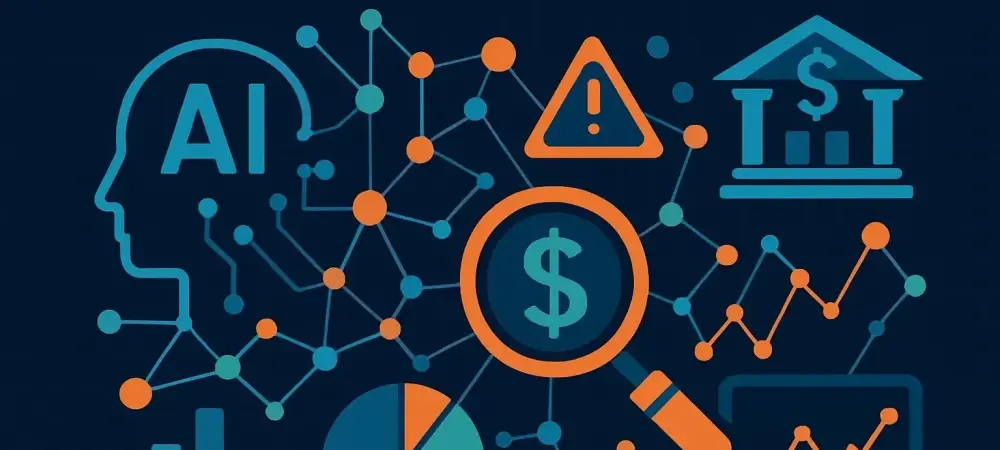In an era marked by rapid technological change, financial institutions face the daunting challenge of combating sophisticated money-laundering tactics. Traditional anti-money laundering (AML) systems are often overwhelmed by a flood of false positives and sluggish investigative processes. These outdated systems, primarily rule-based, struggle to keep pace with the complex web of financial crime. The need for a transformative approach is imperative, and artificial intelligence (AI) coupled with graph analytics has emerged as a beacon of hope. By diving into network relationships and unearthing hidden patterns, these advanced tools offer a revolutionary path forward in AML efforts.
Current Trends in AI and Graph Analytics for AML
Market Adoption and Technological Advancements
The adoption of AI and graph analytics in AML is witnessing significant growth. Financial institutions are progressively integrating these technologies to manage and mitigate money-laundering risks effectively. Over the past few years, the industry’s embrace of AI-driven solutions has accelerated, with reports highlighting substantial reductions in false positives—over 80% in some cases—and enhanced detection capabilities. This rise is backed by credible findings that underscore the importance of AI and graph analytics in refining AML processes and fortifying defenses against financial crimes. Technological advancements in AI and graph analytics are also contributing to the transformation of the AML landscape. Machine learning models, enhanced with graph-based analytics, offer enhanced visibility into transaction networks and relationships. These advancements not only facilitate more accurate risk assessment but also ensure real-time insights into evolving laundering techniques. The synergy between AI and graph analytics is central to pushing the boundaries of traditional AML systems, positioning them for contemporary challenges.
Practical Applications and Case Studies
Real-world applications illustrate the tangible benefits of integrating AI and graph analytics into AML operations. Several pioneering companies have successfully harnessed these technologies to improve compliance and thwart money laundering. By examining complex transaction networks, these entities have detected potential risk areas with a level of clarity previously unattainable. Real-time analytics allows institutions to promptly address threats, thereby maintaining a robust compliance posture.
Furthermore, detailed case studies reveal the effectiveness of these technologies in practice. Financial institutions equipped with AI and graph-based solutions have reported noticeable improvements, with typology-driven scoring enhancing risk detection accuracy. Products and systems that leverage these innovations exemplify milestones in advancing AML efforts, serving as benchmarks for other institutions aiming to modernize their frameworks.
Expert Insights on the Transformative Role of AI in AML
Industry experts are in unanimous agreement on the transformative potential of AI and graph analytics in AML. These technologies offer significant advantages, primarily in compliance monitoring and risk detection capabilities. By analyzing transaction behaviors and identifying connections that traditional systems often miss, AI and graph analytics streamline the risk assessment process while minimizing operational inefficiencies. Experts highlight the critical role of these technologies in reducing false alerts and prioritizing genuine risks.
However, these advancements do not come without challenges. The implementation of AI and graph analytics requires significant investment and expertise, along with overcoming integration barriers with existing systems. Experts caution that while these technologies are game changers, institutions must ensure robust policy frameworks and skilled workforce readiness to effectively harness their potential. Despite these challenges, the consensus is clear: the proper integration of AI and graph analytics holds transformative promises for AML practices, paving the way for smarter and more responsive compliance systems.
Future Outlook and Implications of AI and Graph Analytics in AML
Looking ahead, the future of AI and graph analytics in AML seems poised for remarkable advancements. Continued innovation is expected to further enhance the efficiency and accuracy of these systems. Adaptive and real-time models promise to address the constantly evolving landscape of financial crimes, reinforcing institutions’ ability to preempt and respond to emerging threats effectively. The trajectory indicates a move toward more intelligent and cohesive systems that seamlessly adapt to changing dynamics. These advancements carry implications beyond the financial sector, impacting various industries susceptible to financial crime. With enhanced risk detection and minimized false positive rates, organizations can allocate resources more effectively, reducing operational overheads. However, as these technologies evolve, challenges such as ensuring privacy and ethical use will necessitate careful consideration. Nonetheless, the potential benefits underscore the imperative for industries to stay abreast of these developments and adapt their strategies accordingly.
Conclusion
In conclusion, AI and graph analytics have emerged as powerful tools in revolutionizing AML efforts. Over recent years, their impact on compliance monitoring and risk detection has been transformative. As institutions continue to face escalating scrutiny, the integration of these technologies offers a coherent and adaptive solution to the challenges of modern financial crime. Forward-thinking organizations are positioned to benefit significantly from these advancements, ensuring more informed and efficient decision-making processes. A continued focus on innovation and adaptation will pave the way for enhanced AML systems, reshaping the fight against financial crime with precision and foresight.

